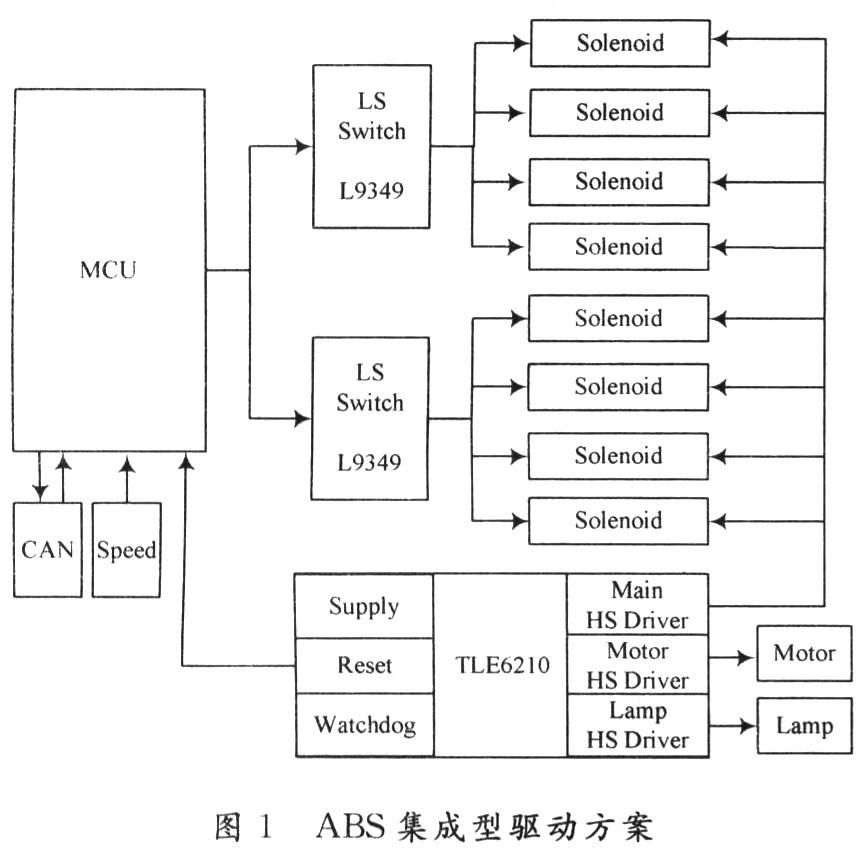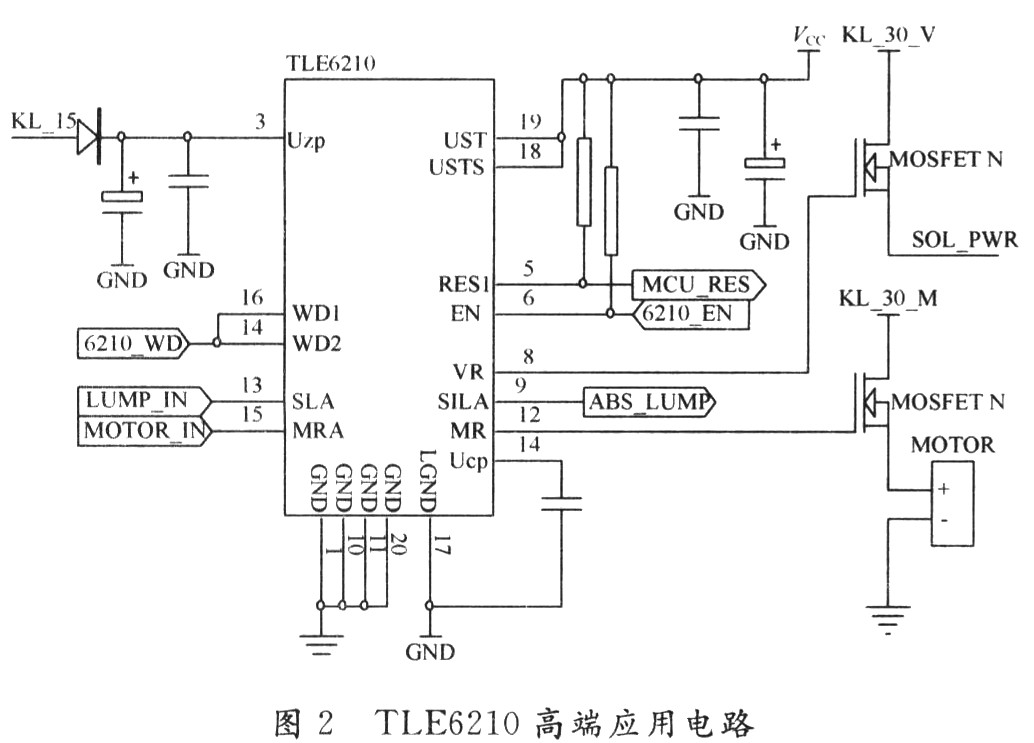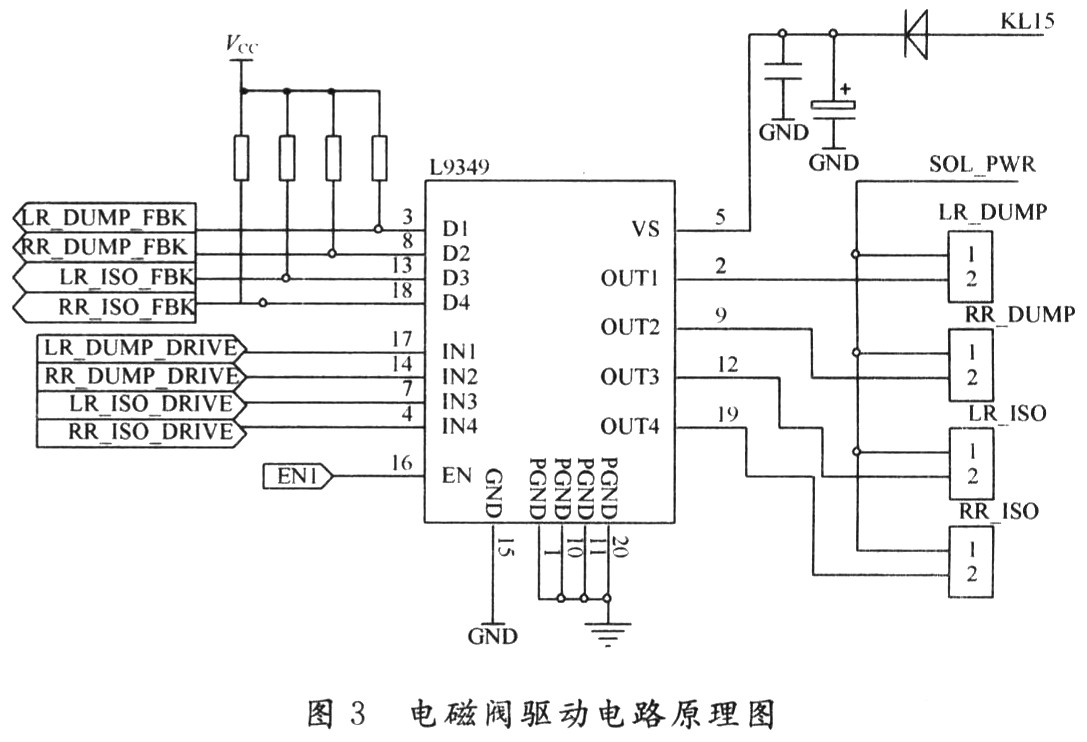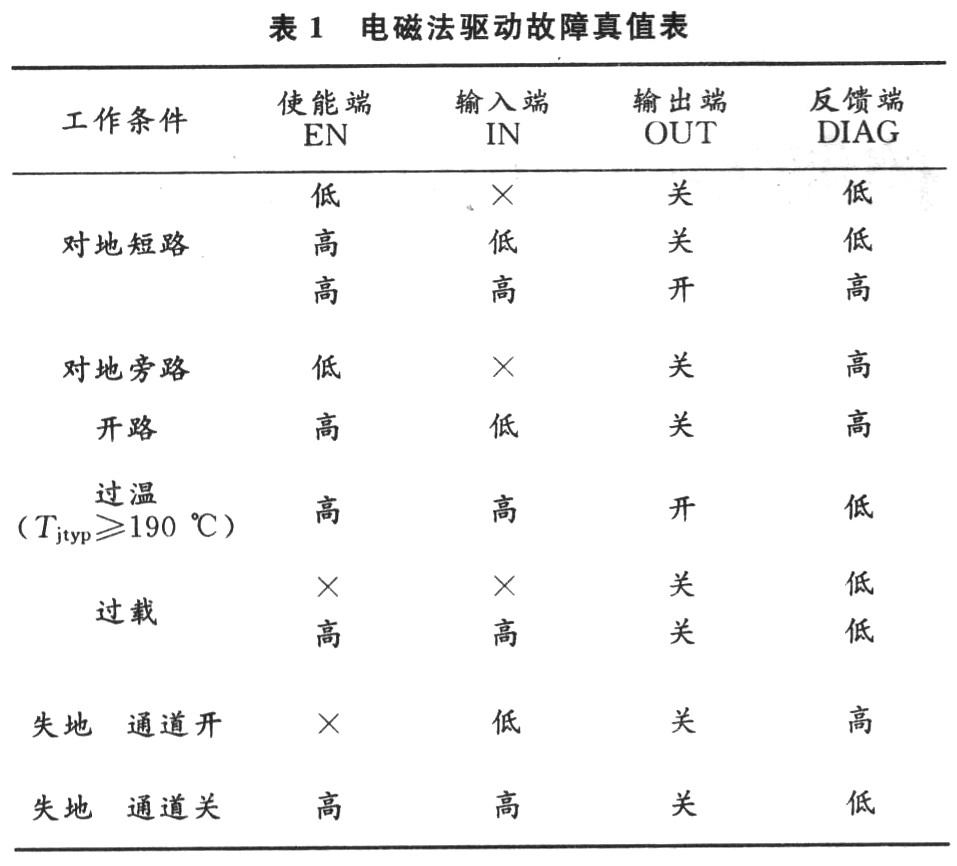
Privacy statement: Your privacy is very important to Us. Our company promises not to disclose your personal information to any external company with out your explicit permission.
Select Language
Introduction ABS is a must-have security electronic device in today's cars, and its functions are receiving more and more attention. The ABS system uses a solenoid valve and a return pump to fine-tune the wheel cylinder pressure in the brake to prevent excessive braking and lock the wheel. Due to the very harsh working environment of ABS, in order to ensure the efficiency and reliability of the response of the solenoid valve and the motor, in addition to the parameters of the actuator itself, the design of the drive circuit directly determines the quality of the drive.
Today's automotive electronics market is extremely hot and the competition is fierce. Major integrated chip companies, such as ST, Freescale, and Infineon, have designed ABS's dedicated integrated chips and proposed their own ABS solutions. The chip is like a black box, which facilitates the circuit design process, and because of its high integration, the circuit is more concise and more reliable, representing the direction of future circuit design.
This article refers to the address: http://
1 ABS driver circuit integration scheme ABS driver circuit integration scheme shown in Figure 1, select TLE6210 for DC motor and solenoid valve master switch high-end drive, select L9349 as 8 solenoid valves (4 in 4 out) low End drive.

The ABS controller changes the current on and off and frequency on and off of the solenoid valve coil through PWM control to realize the wheel cylinder pressurization, pressure keeping and decompression operation of the wheel brake; when the solenoid valve ABS pressure reducing valve is opened for decompression The oil return pump can return the brake fluid in the wheel cylinder to the brake master cylinder for use in the next control cycle; the high side master switch of the solenoid valve is used to control the power supply circuit of the solenoid valve, and if the ABS system fails, disconnect The power supply makes the 8 solenoid valves hanging below not operate, and the routine is restored. 
The output pin of the high-side main switch of the solenoid valve is VR. When the ABS system is powered on reset or the watchdog gives a control signal, the output pin is switched to the ON state, thus conforming to the logic of the actual working of the ABS, and also ensuring the ABS system. In the event of a fault, the control of the solenoid valve can be quickly withdrawn and the normal brake can be restored. The MRA pin of the chip is the control signal input terminal, and the output pin MR drives the DC motor. When the I/O port of the MCU gives a high level to the MRA pin, the external MOSFET is turned on, and the DC motor realizes the oil return function. Since the solenoid valve and the motor are inductive loads, an external reverse freewheeling diode is also required. The driving part of the chip has over-temperature protection, over-current protection and short-circuit protection. When the above fault condition occurs, the chip can be automatically turned off, so it has strong self-protection characteristics.
Based on the highly integrated solution of the TLE6210 chip, not only can the motor drive circuit and the solenoid valve precursor circuit be greatly simplified, but also the number of discrete chips required for the entire controller can be greatly reduced, the PCB board size is also smaller, the cost is reduced, and the enhancement is enhanced. Controller reliability.
3 Based on the L9349 solenoid valve drive, the maximum starting current of the four normally open oil solenoid valves of the general ABS pressure regulator is about 3.6 A; the maximum starting current of the four normally closed oil solenoid valves is about 2.4 A. The operating voltage of the L9349 is 4.5 to 32 V, and the internal resistance of the two channels is O. 2 Ω, the maximum load current is 3 A; the other two internal resistances are 0.3 Ω, and the maximum load current is 5 A, which can meet the driving current requirements of ABS normally open and normally closed solenoid valves, and the lower conduction internal resistance The low power consumption is guaranteed, so the L9349 is ideal for driving control of ABS solenoid valves. The schematic diagram of the solenoid valve drive circuit is shown in Figure 3.

In Figure 3, each L9349 can drive four solenoid valves to operate, which is a typical low-end drive. The 12 V supply voltage is supplied to the chip through the Vs port; when the PWM control signals are input to the IN1 to IN4 terminals, the output terminal can be conveniently controlled to drive the 4-way solenoid valve, and the maximum drive capability of the OUT1 and OUT2 ports is 5 A. Normally closed solenoid valve connected to ABS; OUT3 and OUT4 ports have a maximum drive capacity of 3 A, should be connected to ABS normally open solenoid valve, can not be connected reverse; EN port is the enable end, can quickly close the chip through MCU; digital ground of L9349 The analog ground separation improves the anti-interference ability of the drive module.
D1~D4 are fault diagnosis pins, which must be connected with external pull-up resistors. When the circuit is working normally, this pin is logic high level. If a fault occurs, it will be automatically set to logic low level. By logically combining the input control end and the state feedback end of each independent channel, the working state of the output end can be recognized in real time, and corresponding measures are immediately taken, including exiting the ABS function, illuminating the fault display light, and transmitting the fault code. The functional truth table is shown in Table 1.

4 Conclusions The current design of solenoid valve drive circuits commonly used in ABS design is based on power MOSFETs, supplemented by protection loops, isolation measures, etc. to ensure their reliability, and a special self-diagnostic loop is designed for fault detection. Although the discrete scheme has certain flexibility in the design of the specific circuit, the cost and PCB space are relatively expensive. This solution adopts the ABS dedicated integrated chip TLE621O and L9349, which integrates the driving and monitoring functions, and can be applied to the ABS system. Reduce power consumption, facilitate fault detection, improve reliability, and greatly improve the performance of the entire system.
Письмо этому поставщику

Privacy statement: Your privacy is very important to Us. Our company promises not to disclose your personal information to any external company with out your explicit permission.

Fill in more information so that we can get in touch with you faster
Privacy statement: Your privacy is very important to Us. Our company promises not to disclose your personal information to any external company with out your explicit permission.